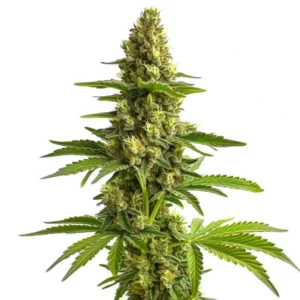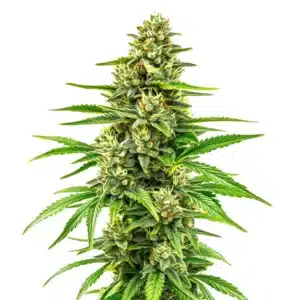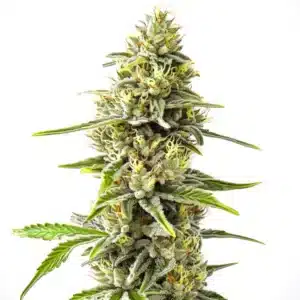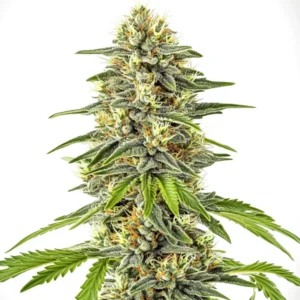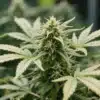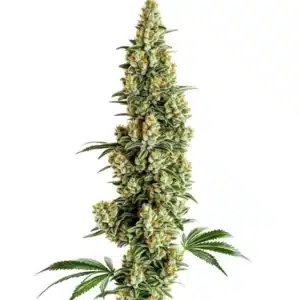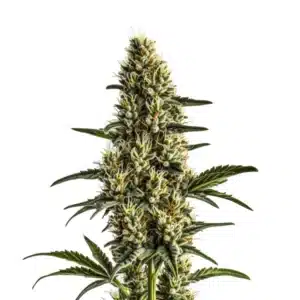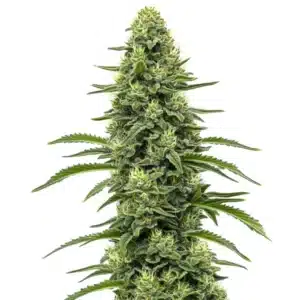
Cannabis Transpiration and Water Management Tips
Cannabis plants are like any other living organism; they need water to survive and thrive. However, getting the water balance right can be tricky. Too much or too little can lead to issues. Cannabis transpiration and water management tips are essential for both new and experienced growers.
Transpiration in cannabis is the process where water is absorbed by the roots and then evaporated from the leaves. This process is crucial because it helps with nutrient uptake and temperature regulation. By focusing on optimizing cannabis transpiration rates, you can ensure your plants remain healthy and productive.
Recommended Strains
Bruce Banner #3
|
|
THC | 20% - 29% (High) |
|
|
Type | Feminized |
|
|
Yield | Medium |
|
|
Phenotype | 50% Indica / 50% Sativa |
Grape Ape
|
|
THC | 15% - 25% (Medium) |
|
|
Type | Feminized |
|
|
Yield | High |
|
|
Phenotype | 90% Indica / 10% Sativa |
When it comes to strains, not all are created equal. For instance, the Bruce Banner 3 strain from Blimburn Seeds is known for its robustness and can handle various water levels. However, even with resilient strains, knowing water conservation in cannabis cultivation is key to successful growing.
Effective Irrigation Strategies for Cannabis
Proper irrigation is crucial for cannabis growth. Without the right strategy, you risk overwatering or underwatering your plants. Both scenarios can lead to root rot or dehydration, respectively. To get it right, consider the environment, strain, and growth stage of your plants.
Drip irrigation is a popular method among growers. It allows for precise water delivery directly to the roots, minimizing waste. This method is especially useful for managing humidity for cannabis growth. The Grape Ape strain from Blimburn Seeds thrives with a consistent moisture level, making drip irrigation a perfect match.
Another effective irrigation strategy is the use of soaker hoses, which deliver water slowly and evenly across the soil surface. This can help maintain consistent moisture levels, especially in larger cultivation areas. Soaker hoses are particularly beneficial in outdoor settings where water loss due to evaporation is a concern. For growers seeking Cannabis transpiration and water management tips, combining soaker hoses with proper mulching and scheduled watering can optimize plant hydration and reduce stress.
Consider integrating smart irrigation systems that utilize sensors to adjust water delivery based on real-time data. These systems can automate the irrigation process, ensuring each plant receives the optimal amount of water. This not only saves time but also enhances cannabis plant water usage tips, contributing to healthier growth.
Choosing the Right Time for Watering
Timing can make or break your cannabis watering schedule. Watering early in the morning is often ideal. This allows the plant to use the water throughout the day, aiding in transpiration as the sun warms the environment.
Evening watering, on the other hand, can lead to excess humidity, promoting mold growth. The Blue Dream strain from Blimburn Seeds is particularly sensitive to high humidity, requiring careful attention to watering times.
It’s also important to consider the weather conditions when planning your watering schedule. On particularly hot days, plants may require additional water to compensate for increased evaporation rates. Conversely, cooler days might necessitate reduced watering to prevent oversaturation.
Monitoring your plants for signs of stress can also guide your watering schedule. Wilting or drooping leaves may indicate dehydration, while yellowing leaves could be a sign of overwatering. Adjusting your approach based on these observations is key to optimizing cannabis transpiration rates. For growers seeking practical guidance, applying Cannabis transpiration and water management tips ensures healthier plants, improved nutrient uptake, and more consistent yields.
Promos & Deals
Managing Humidity for Cannabis Growth
Humidity levels play a significant role in cannabis plant water usage tips. High humidity can slow down transpiration, leading to nutrient imbalance. Conversely, low humidity can speed up transpiration, causing plants to dry out quickly.
To maintain the right balance, use a hygrometer to monitor humidity levels in your grow space. Ideal humidity varies depending on the growth stage. Seedlings prefer higher humidity, while flowering plants thrive in drier conditions.
Knowing the relationship between temperature and humidity is crucial for effective humidity management. Warmer temperatures can hold more moisture, potentially increasing humidity levels. Conversely, cooler temperatures can lead to drier air, impacting transpiration rates.
Proper air circulation is another factor in managing humidity for cannabis growth. Using fans to circulate air can help prevent stagnant conditions, which are conducive to mold and mildew. Good airflow supports healthy transpiration and nutrient uptake, and is often highlighted in Cannabis transpiration and water management tips as a key practice to maintain plant health and maximize yields.
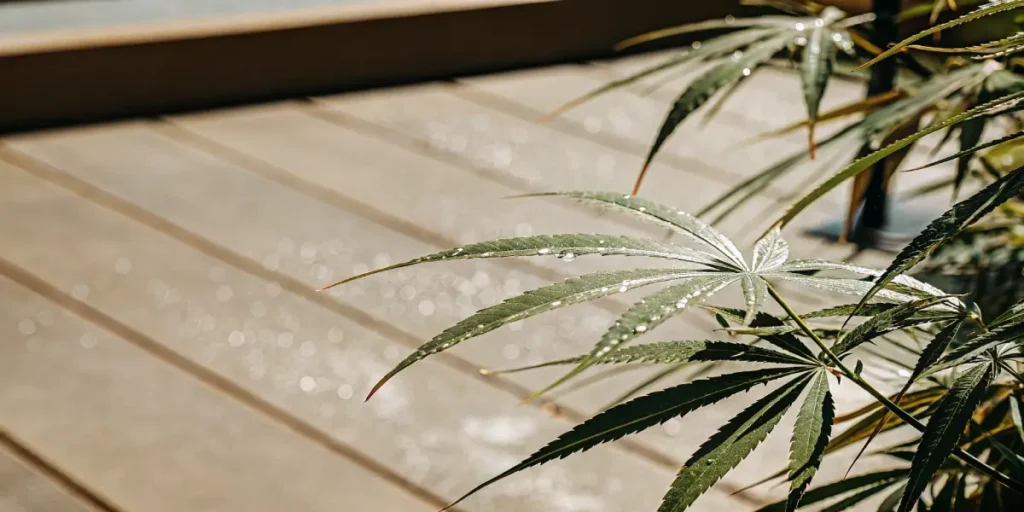
Adjusting Humidity Levels
Using a humidifier or dehumidifier can help adjust the humidity in your grow space. For example, during the seedling stage, a humidifier can boost humidity to optimal levels, promoting healthy growth.
As plants transition to the flowering stage, a dehumidifier helps lower humidity, preventing mold and mildew. Pay attention to changes in weather, as they can affect indoor humidity levels.
Incorporating humidity control systems with automated settings can provide precise adjustments tailored to your plants’ needs. These systems can be programmed to maintain specific humidity levels, reducing the risk of human error.
Regularly cleaning and maintaining your humidifiers and dehumidifiers ensures they operate efficiently. Accumulated dust or mineral buildup can hinder their performance, affecting the overall environment for your cannabis plants.
Water Conservation in Cannabis Cultivation
Water conservation is not just about saving water; it’s about using it efficiently. This is crucial for sustainable cannabis cultivation. Implementing water-saving practices can reduce costs and environmental impact.
Collecting rainwater is an effective way to conserve water. Rainwater is free of chemicals found in tap water, making it ideal for cannabis plants. Additionally, mulching can help retain soil moisture, reducing the need for frequent watering.
Incorporating drought-resistant strains can also contribute to water conservation in cannabis cultivation. These strains require less water to thrive, making them ideal for regions with limited water resources. Selecting such strains can significantly reduce your overall water usage.
Employing soil amendments that improve water retention can further enhance conservation efforts. Materials like coconut coir or vermiculite can help maintain soil moisture, ensuring your plants receive adequate hydration without excessive watering.
Sustainable Water Practices
Recycling water is another method of conservation. Some growers use recirculating systems, where excess water is collected, filtered, and reused. This technique is both efficient and environmentally friendly.
Implementing these practices not only benefits the environment but also enhances the growth conditions of strains like Grape Ape. Efficient water use leads to healthier plants and better yields.
Educating yourself and your team on sustainable water practices ensures that everyone involved in the cultivation process is committed to conservation. Regular training and updates on new techniques can foster a culture of sustainability.
Collaboration with local agricultural organizations can also provide insights into innovative water management strategies. Sharing knowledge and resources can lead to improved practices and outcomes for all parties involved in cannabis cultivation.
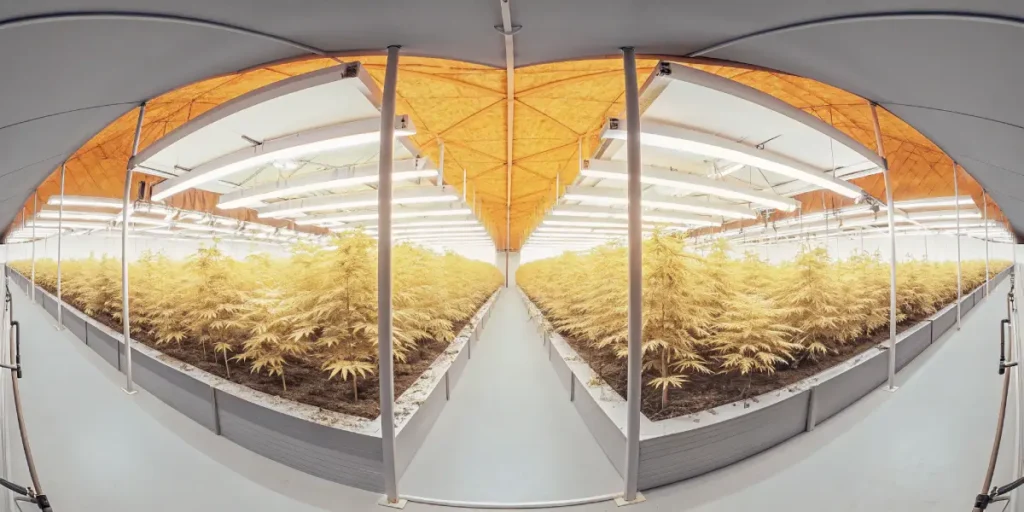
FAQs
What is cannabis transpiration and why is it important?
Cannabis transpiration is the process by which water is absorbed by a plant’s roots and then evaporated from its leaves. This process is crucial for a few reasons. Firstly, it helps with nutrient uptake. The movement of water from roots to leaves carries essential nutrients, ensuring the plant remains healthy.
Secondly, transpiration aids in temperature regulation. As water evaporates from the leaf surface, it cools the plant, preventing overheating. Proper transpiration is essential for optimizing cannabis transpiration rates, ultimately leading to better plant health and yields.
Moreover, transpiration plays a role in maintaining turgor pressure within the plant cells, which is critical for structural support. This pressure keeps the plant upright and aids in the transport of nutrients throughout the plant.
Knowing the factors that influence transpiration, such as light intensity, humidity, and temperature, can help growers optimize conditions for their plants. By managing these factors, you can improve overall plant health and productivity.
How can I optimize water usage for cannabis plants?
Optimizing water usage involves knowing your plant’s specific needs and adjusting accordingly. Using tools like moisture meters can help monitor soil moisture levels, preventing over or under-watering.
Consider the growth stage of your plant. Seedlings have different water requirements compared to flowering plants. Adjusting your watering schedule and using efficient irrigation systems like drip irrigation can significantly improve cannabis plant water usage tips.
Implementing a scheduled watering routine based on the plant’s life cycle can also enhance water efficiency. By tailoring watering practices to each growth phase, you can ensure that plants receive the right amount of water at the right time.
Incorporating organic soil enhancers that improve water retention can further optimize water usage. These enhancers can reduce the frequency of watering, making them an excellent addition to your cannabis cultivation strategy.
What are the best strains for efficient water management?
Some strains are naturally more resilient to water fluctuations and are suitable for efficient water management. Bruce Banner is a robust strain that can handle varying water levels, making it ideal for growers looking to optimize water use.
Grape Ape and Blue Dream are also excellent choices. These strains, available at Blimburn Seeds, have specific watering needs but thrive when those needs are met. Choosing the right strain is crucial for water conservation in cannabis cultivation.
Additionally, strains like Northern Lights are known for their adaptability to various environmental conditions, including water availability. Such strains can be an excellent choice for growers facing uncertain water resources.
Exploring hybrid strains that combine traits from different parent plants can also yield options for efficient water management. These hybrids may offer unique advantages in terms of water resilience and overall growth performance.
How do I manage humidity for my cannabis plants?
Managing humidity involves monitoring and adjusting the levels in your grow space. Use a hygrometer to keep track of humidity, ensuring it stays within the ideal range for your plant’s growth stage.
Utilize humidifiers or dehumidifiers as needed. During the seedling stage, higher humidity is beneficial, while flowering plants prefer lower humidity to prevent mold. Effective humidity management is key for managing humidity for cannabis growth.
Incorporating environmental controllers that automate humidity adjustments can provide consistent growth conditions. These controllers can be programmed to maintain optimal levels, reducing the likelihood of human error and enhancing plant health.
Regularly inspecting your grow space for signs of mold or mildew is essential. Early detection and intervention can prevent humidity-related issues from impacting your cannabis plants, ensuring a successful harvest.
What are some common mistakes in cannabis water management?
A common mistake is overwatering. Many growers assume more water equals healthier plants, but this isn’t true. Overwatering can lead to root rot and nutrient deficiencies. Using moisture meters can prevent this mistake.
Another mistake is ignoring environmental factors like humidity and temperature. These can significantly affect water needs. Adjusting your water management techniques based on these factors is vital for successful cannabis cultivation.
Failing to account for seasonal changes can also impact water management. As temperatures and humidity levels fluctuate, adjusting your watering practices accordingly ensures your plants receive consistent care.
Overlooking the importance of soil quality can lead to inefficient water use. Ensuring your soil has good drainage and water retention properties is crucial for maintaining healthy plants and optimizing water management strategies.


